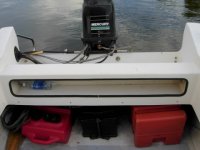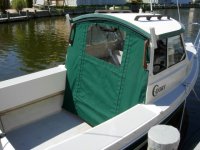1984 CD 16
This is what I bought

Wanted to see what was in the boxes

Fiberglass over plywood, but no fiberglass on the inside and the wood is soaked.
Decided to open up fronts for fuel tank storage

There was about an inch of standing water inside the boxes. Makes me very concerned about the hull.
Pretty sure my transom is gonna be wet too. There is some separation of the cap and transom

This is what I bought

Wanted to see what was in the boxes

Fiberglass over plywood, but no fiberglass on the inside and the wood is soaked.
Decided to open up fronts for fuel tank storage

There was about an inch of standing water inside the boxes. Makes me very concerned about the hull.
Pretty sure my transom is gonna be wet too. There is some separation of the cap and transom





